Wonderfully Ruined
I love growing plants in containers, and I've collected a lot of them over the years. Sometimes I get beautiful ceramic pots that will last many seasons but are somewhat expensive, but I also get cheap plastic pots, and the old standard: clay pots. I have a lot of clay pots -- I just like the look of them for most plants, and they're fairly inexpensive. One reason for the lower price is that they're typically not "frost proof", which means that if you garden where winter temperatures get below freezing, these pots may not make it through the winter undamaged.
So the advice is given to remove plants and soil from clay pots, and store the empty pots where they won't collect water -- it's the expansion of freezing water, including water in soil, that cracks these pots. I do this for many of my pots, but I have others that I leave planted all winter long.
Sometimes a clay pot will crack its first winter, but I've found that they'll typically last a couple of years at least, often much longer than that. When they do finally start cracking and spalling, I often don't notice right away.
The result is what I think is a great aged look, as if these pots have been in my garden for decades.
I have a pretty informal/casual gardening style, so these decrepit pots don't seem completely out of place.
It helps when there are plants around the pot to soften the harshness of the pottery shards. I particularly like the algae (or is it moss?) that is growing on some of them. Nice touch!
If a pot is damaged enough to expose its soil and the plant's roots it has to be replaced, no matter how interesting it may look. Dead plants rarely add character to a garden the way that I think weather-beaten pots do, and a plant with exposed roots is almost always a soon-to-be-dead plant.
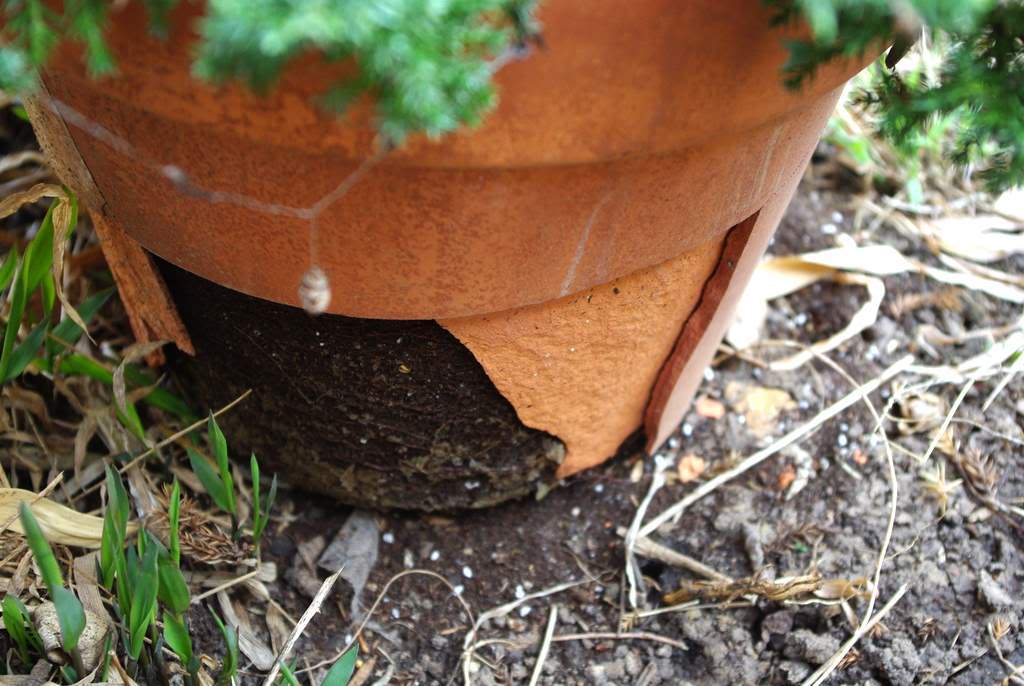 |
| Soil is exposed, so this pot has to go! |
It's important not to move a cracked pot if you want it to age more. Bad things happen when you do this:
Pots break in other ways too, like if a heavy shovel falls on them, or you knock two pots together. These
regular broken pots don't add the same element of history to a garden that the weathered ones do, at least not to my eye. (I'll still try to repair these accidentally broken pots, or at least reuse them in my garden somehow, but that's for another post I think.)
Even "frost proof" clay pots will eventually break down:
I suppose the nice ceramic ones will someday shatter too, but I haven't seen it happen yet -- luckily. I can handle the loss of a cheap clay pot that can be easily replaced with an identical copy, but a one-of-a-kind glazed pot falling to pieces would be much harder to take I think.
For now I'll just keep enjoying their weathered beauty, and sometime soon decide which of these needs to be removed or replaced. I don't want a garden full of fractured pots, I just want a few as accents. I do love many of these photos though... Maybe I don't need to replace as many as I thought...
.
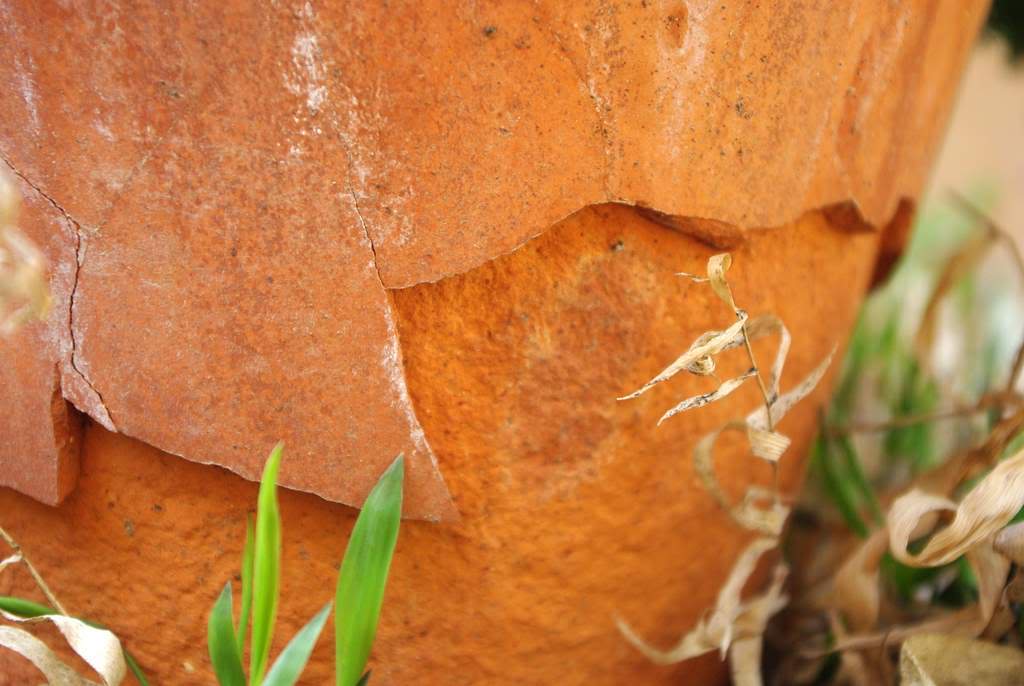
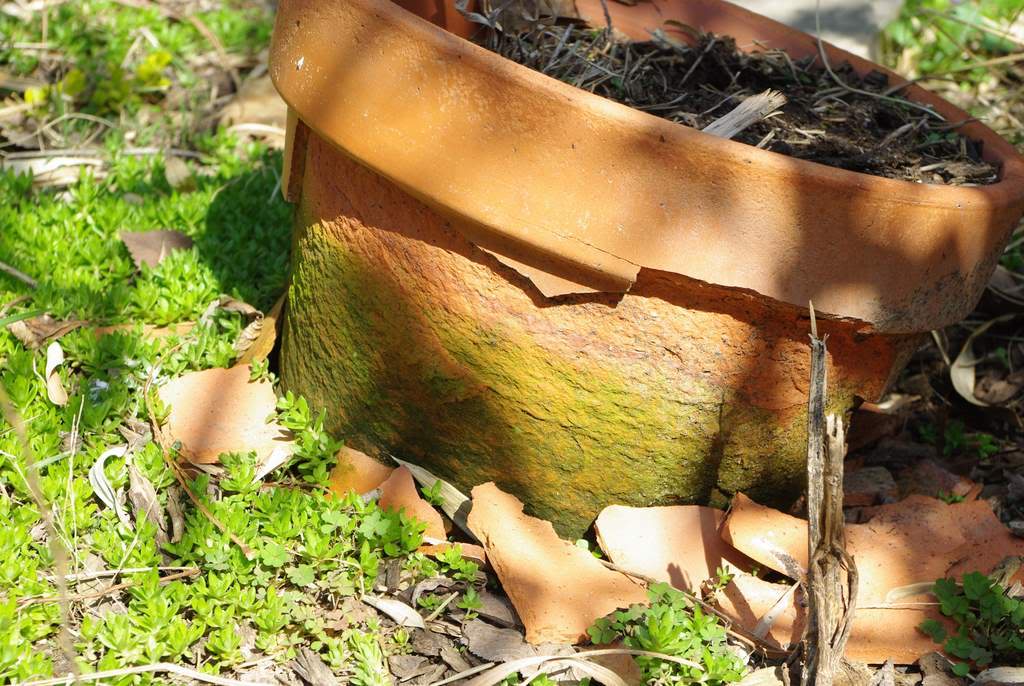
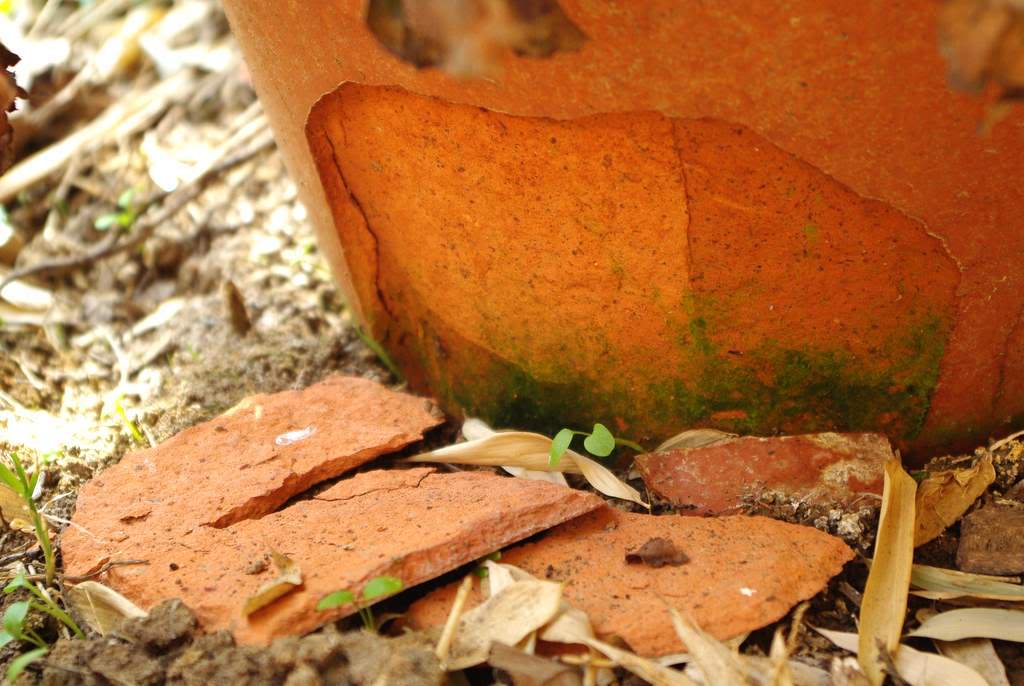
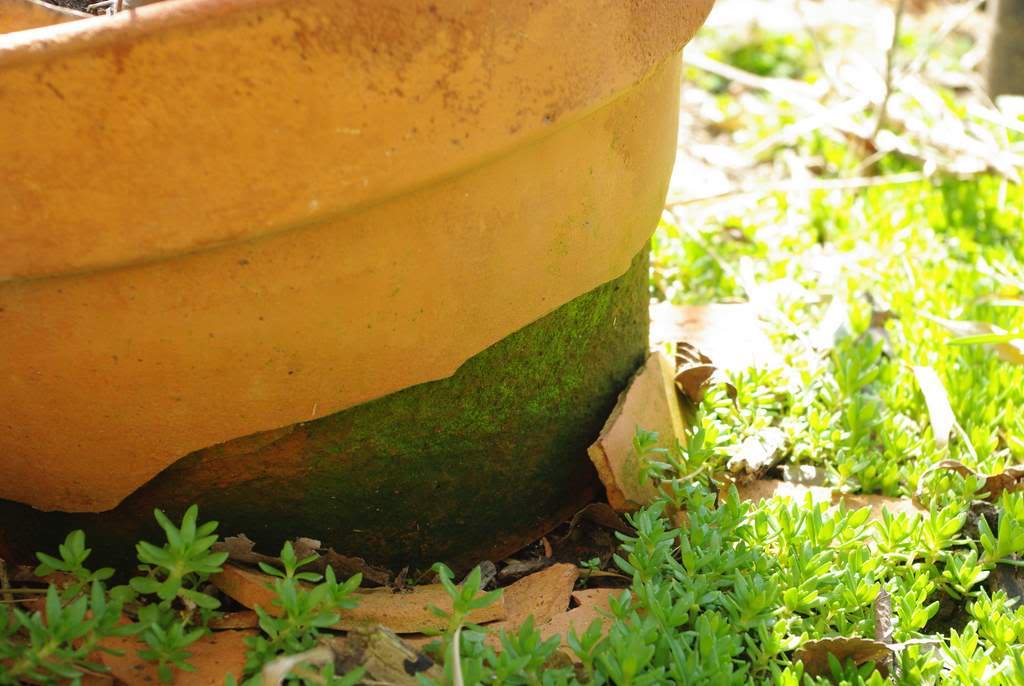
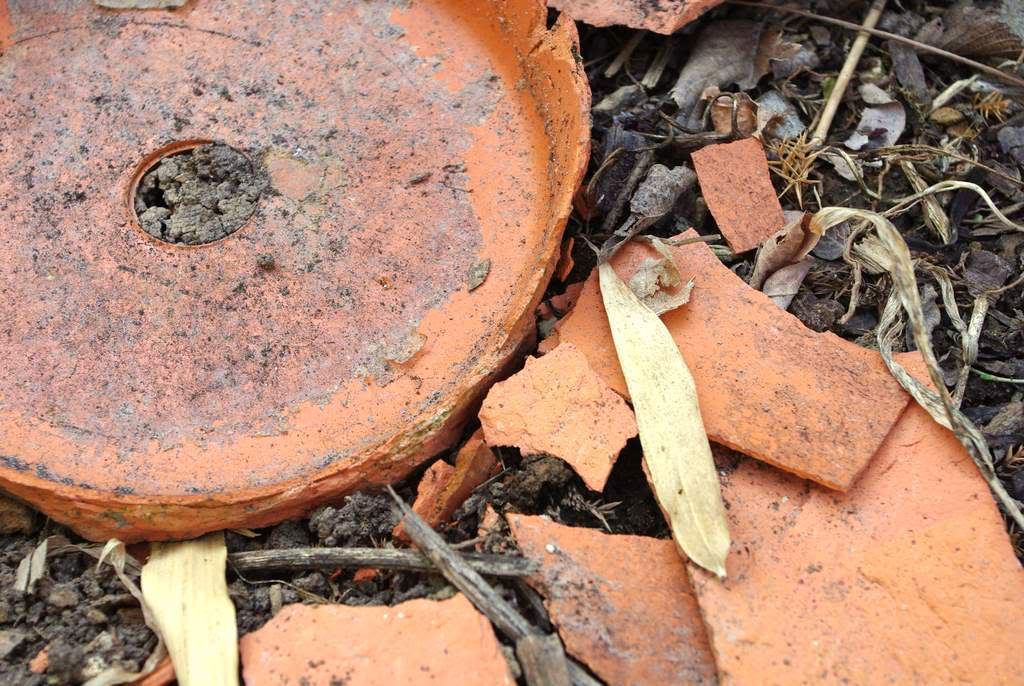
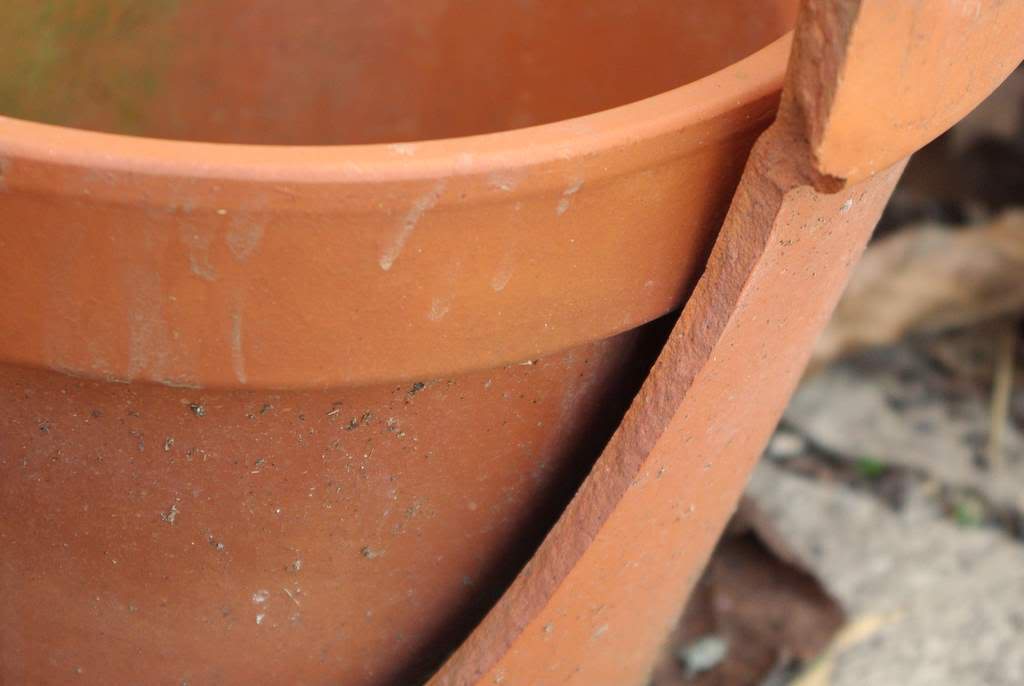
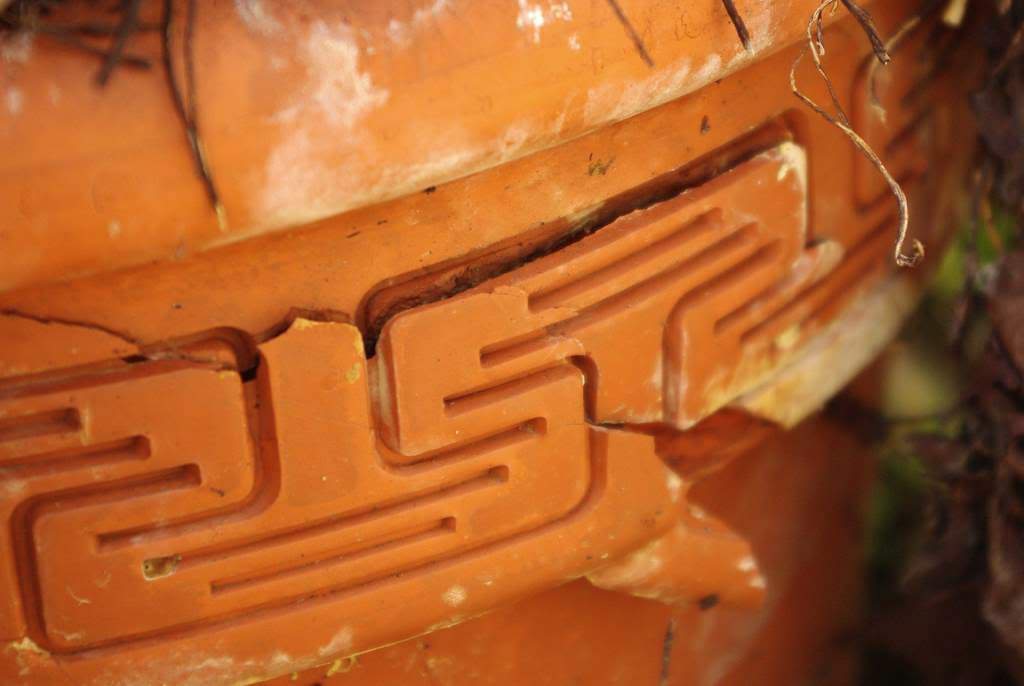
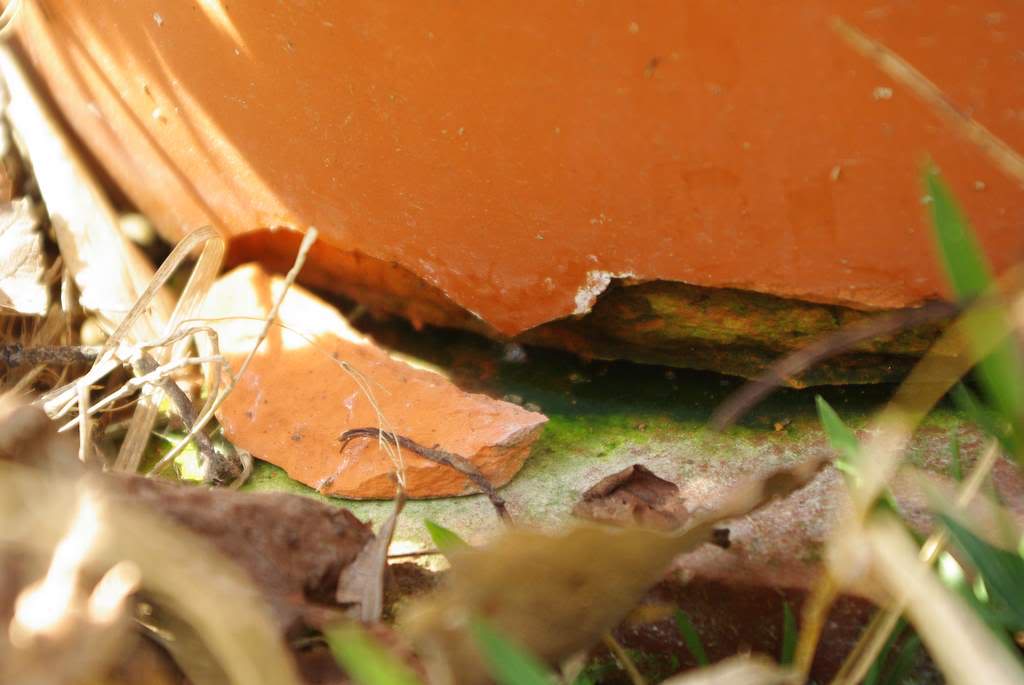
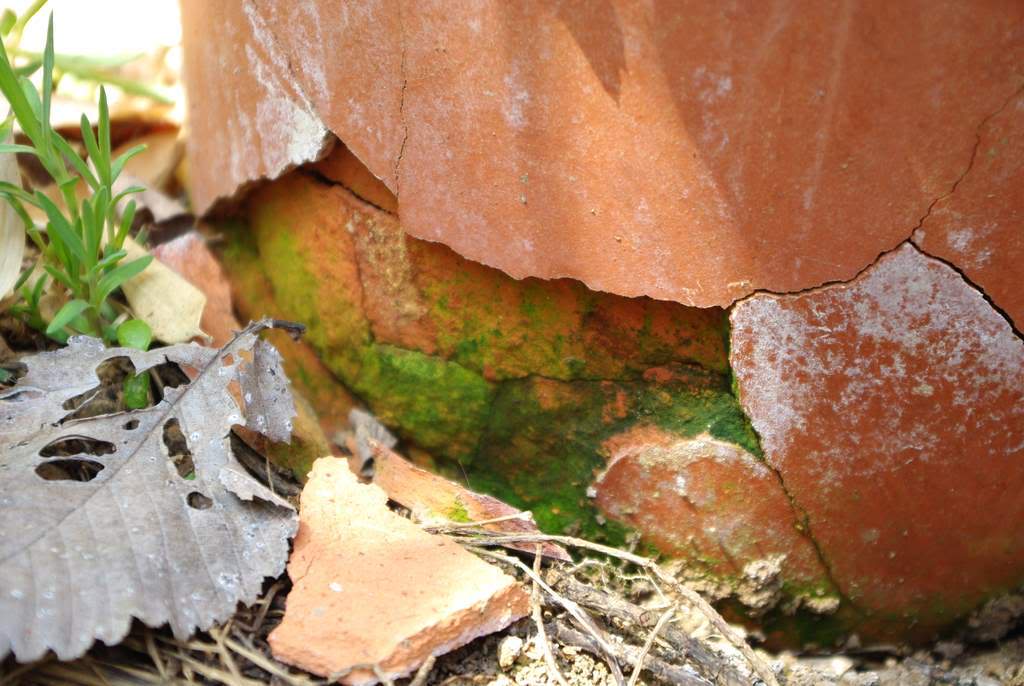




Alan
Have you thought about half burying the pots where the roots are exposed? That way you could still have the aged pot, and the plant will survive.
Would it not help to cover round the pot with straw in winter, to help protect it from the frost / cold temperatures?
I love terracotta pots, too. I just got 13 6-inch pots off Freecycle--for free.
I've read that a couple short lengths of old garden hose in the bottom of a pot will give the soil, or the water in it, somewhere to expand to. I don't know if that means by compressing the hose, or actually squeezing into the hose. I just throw a handful of pinecones into the bottom of pots before planting. Soil has plenty of room to expand, and a few dozen of the billion (give or take) cones on my property get used up.
Dani: these are too fragile now to be moved typically, so burying them is out of the question -- and extra work. =)
Marci: I think the absorbent nature of the unglazed clay pots would result in the spalling ("flaking") that I see on these anyway. It's not the soil expansion that causes this particular damage. I could be wrong though.
I put all my terra cotta pots, plants and all, into the garage for the winter, forget about them, and bring them out in the spring. It works well for me.
I think it is called spalling. I had exactly the same problem with some of my pots this year. Just too cold here this winter.